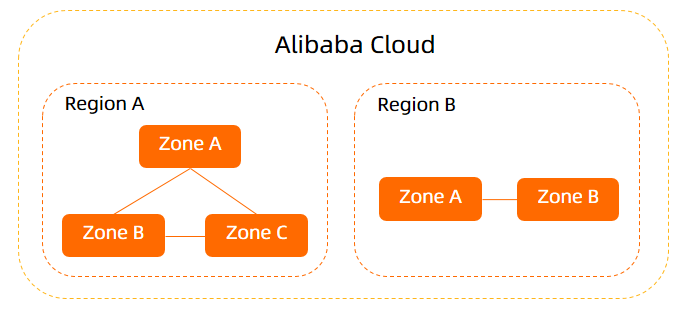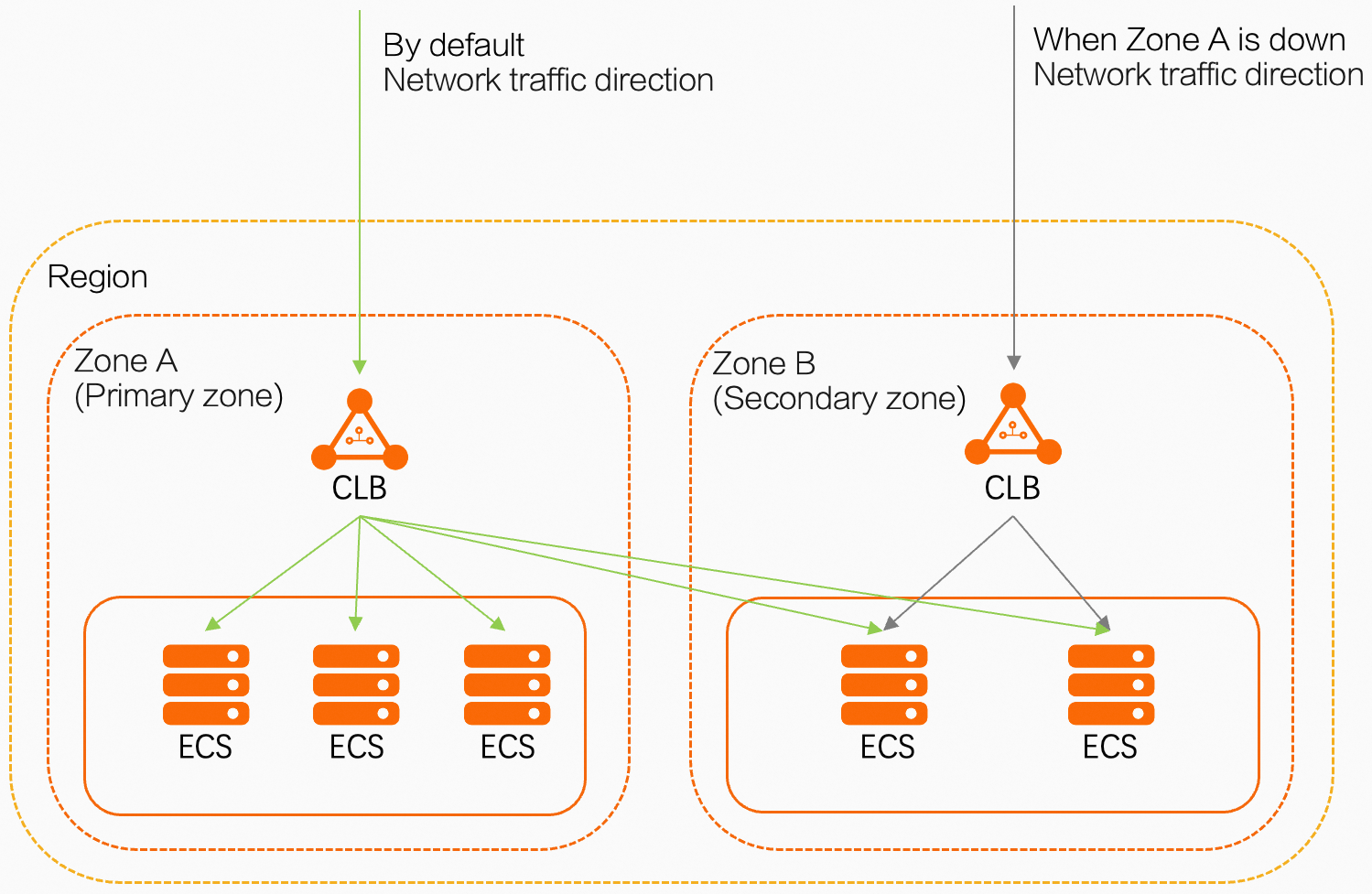This topic describes the regions that support Classic Load Balancer (CLB).
Regions and zones
Regions are geolocations of data centers. After you create a cloud resource, you cannot change the region in which the cloud resource is deployed. Each region has multiple isolated locations known as zones. Each zone has its own independent power supply and network.
Zones within the same region can communicate with each other over an internal network. Fault isolation can be enabled between zones. This way, if faults occur in a zone, other zones are not affected and continue to run as expected. Regions are independent of each other. Zones are isolated from each other. Connections between zones within the same region provide low network latency.

CLB supports cross-zone deployment in most regions. You can deploy a CLB instance across multiple zones within the same region to improve disaster tolerance and ensure the reliability of your applications. When the primary zone is down, CLB can fail over to the secondary zone within about 30 seconds. When the primary zone recovers, CLB automatically switches back to the primary zone.

Before you deploy a CLB instance across zones, take note of the following items:
You can add Elastic Compute Service (ECS) instances that are deployed across zones to a CLB instance. However, the ECS instances and the CLB instance must belong to the same region. CLB can distribute network traffic to ECS instances across zones.
By default, if the primary zone of a CLB instance is active, network traffic is not distributed to the secondary zone. You cannot manually configure the CLB instance to switch network traffic to the secondary zone. The CLB instance switches network traffic to the secondary zone only if the primary zone is down. For example, if the primary zone is down due to power outages or fiber cuts, the secondary zone of the CLB instance automatically takes over. An unhealthy ECS instance does not trigger a zone failover.
ECS instances are independent of CLB. If a CLB instance in the primary zone fails, the ECS instances in the primary zone may still provide services. For example, when the CLB instance in Zone A fails, as shown in the preceding figure, the CLB instance in Zone B takes over. CLB can distribute network traffic across ECS instances that are deployed in different zones. However, if a zone is down due to power outages or fiber cuts, all resources in the zone stop running, including the CLB instance and the ECS instances.
Regions that support CLB
The regions in the following tables are for reference only. For more information, see the buy page.
Regions that support IPv4 CLB instances on the Alibaba Cloud public cloud
Area | Region |
China | China (Qingdao), China (Beijing), China (Zhangjiakou), China (Hohhot), China (Ulanqab), China (Hangzhou), China (Shanghai), China (Shenzhen), China (Heyuan), China (Guangzhou), China (Chengdu), and China (Hong Kong) |
Asia Pacific | Philippines (Manila), Japan (Tokyo), Singapore, Australia (Sydney), Malaysia (Kuala Lumpur), Indonesia (Jakarta), India (Mumbai), South Korea (Seoul), and Thailand (Bangkok) |
Europe & Americas | US (Silicon Valley), US (Virginia), Germany (Frankfurt), and UK (London) |
Middle East | UAE (Dubai) and SAU (Riyadh) |
CLB instances in the Thailand (Bangkok) and SAU (Riyadh) regions support only Layer 4 capabilities.
Regions that support IPv6 CLB instances on the Alibaba Cloud public cloud
Area | Region |
China | China (Qingdao), China (Beijing), China (Zhangjiakou), China (Hohhot), China (Ulanqab), China (Hangzhou), China (Shanghai), China (Shenzhen), China (Heyuan), China (Guangzhou), China (Chengdu), and China (Hong Kong) |
Asia Pacific | Singapore |
Europe & Americas | US (Virginia) and Germany (Frankfurt) |
Middle East | SAU (Riyadh) |
CLB instances in the SAU (Riyadh) region support only Layer 4 capabilities.
Only Internet-facing CLB instances support IPv6.
References
DescribeRegions: queries available regions.
DescribeZones: queries the zones in a region.